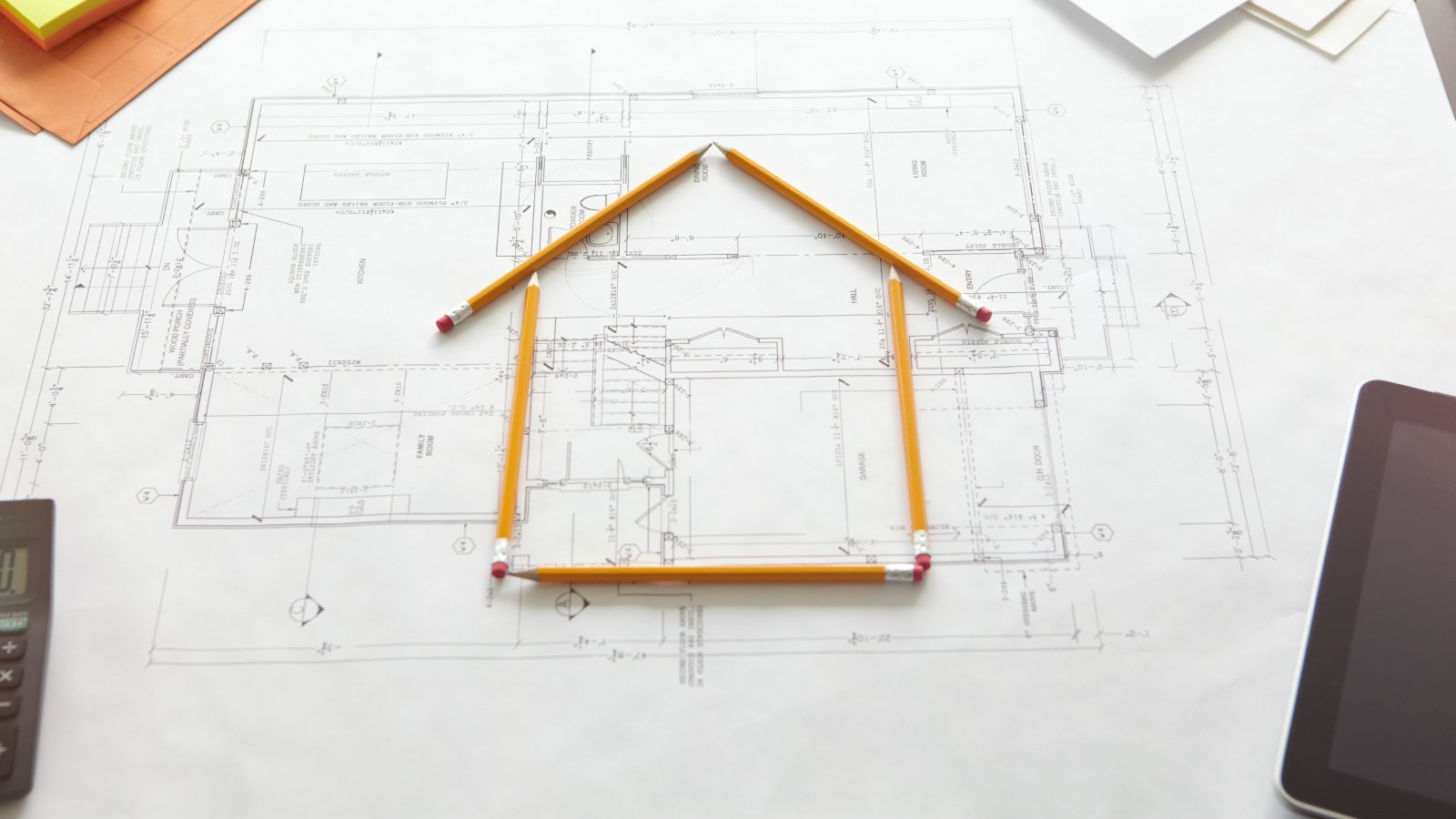SAP Calculations are essential for energy efficiency and regulatory compliance in Scottish construction. As green building standards tighten, understanding SAP is crucial for developers and architects aiming to meet sustainability goals.
This guide explains SAP Calculations in Scotland, their importance and compliance with Scottish Building Standards. By the end, you’ll have a clear roadmap to ensure your projects meet top standards.
What Are SAP Calculations?
SAP Calculations are the UK government’s standardised method for assessing and comparing residential property’s energy efficiency and carbon emissions. The process evaluates a building’s thermal performance, energy use and CO2 emissions, assigning a score determining its compliance with energy regulations.
In Scotland, SAP assessments are required for:
- New residential developments
- Conversions of non-residential properties into homes
- Significant extensions that alter energy performance
SAP scores are expressed as two metrics:
- DER (Dwelling Emission Rate): Measures a property’s CO2 emissions.
- TER (Target Emission Rate): Establishes the maximum allowable emissions for compliance.
Why SAP Calculations Are Crucial in Scotland
Energy efficiency is a priority in Scottish construction. Understand why SAP calculations are the foundation for regulatory compliance and sustainability success.
Regulatory Compliance
Scotland’s Building Standards mandate SAP calculations for residential properties under Section 6. Without these calculations, securing a building warrant or completion certificate is impossible.
Energy Performance Certificates (EPCs)
SAP results generate an EPC, which rates a building’s energy efficiency from A (most efficient) to G (least efficient). An EPC is legally required when selling or renting a property.
Sustainability Goals
Scotland has set ambitious targets to achieve net-zero emissions by 2045. SAP calculations are pivotal in ensuring new builds and conversions align with these goals by promoting energy-efficient design and reducing carbon footprints.
Cost Savings for End Users
Energy-efficient homes save occupants money on heating and electricity bills, adding value and appeal to the housing market.
The SAP Calculation Process in Scotland
From design to completion, SAP calculations are essential. Discover the step-by-step process that ensures your project stays compliant and energy efficient.
Design Phase
SAP calculations start with an assessment of the building’s design. Architects and developers collaborate with SAP assessors to evaluate factors such as:
- Thermal envelope (walls, floors and roof insulation)
- Window glazing and frame specifications
- Heating and cooling systems
- Ventilation strategies
- Renewable energy technologies (e.g., solar panels, heat pumps)
At this stage, preliminary calculations can highlight areas where energy efficiency improvements are needed to meet compliance standards.
Interim SAP Calculations
Once the design is finalised, interim SAP calculations are conducted. These are based on the proposed specifications and ensure the project complies with Section 6 before construction begins.
This phase often includes:
- Recommending design adjustments to meet the Target Emission Rate (TER)
- Advising on material choices and system performance
On-Site Verification
During construction, the SAP assessor may check to ensure the as-built property matches the submitted design specifications. This step ensures alignment between the design and the final build.
Final SAP Calculations
After construction, the SAP assessor conducts a final assessment using as-built data. This determines the property’s actual Dwelling Emission Rate (DER) and confirms compliance. If all requirements are met, the assessor issues the Energy Performance Certificate (EPC).
Key Components of SAP Calculations
To fully understand SAP calculations, it’s important to break down the elements they assess:
Building Fabric
The thermal performance of a building’s walls, roof, floor, windows and doors is crucial. High-quality insulation and energy-efficient glazing can significantly enhance the SAP score.
Heating Systems
SAP calculations consider the efficiency of heating systems, including boilers, heat pumps and radiators. Low-carbon and renewable systems score higher than traditional fossil-fuel systems.
Hot Water Systems
The efficiency of water heating systems and storage tanks plays a role in determining a property’s energy demand.
Ventilation
SAP assesses the building’s ventilation strategy to minimise heat loss while maintaining air quality.
Renewable Energy Sources
Including renewable technologies like solar panels or wind turbines can improve a property’s SAP score by reducing reliance on non-renewable energy.
Lighting and Appliances
Energy-efficient lighting and smart appliances contribute to a better SAP rating.
Challenges in SAP Calculations
While SAP calculations are essential, they can be complex. Professionals in Scotland often encounter challenges such as:
Keeping Up with Regulatory Changes
Scottish Building Standards evolve frequently to align with national and global sustainability goals. Staying updated is crucial but can be time-consuming.
Balancing Cost and Efficiency
Achieving compliance often requires investing in high-quality materials and technologies. Balancing these costs with project budgets can be challenging.
Documentation and Accuracy
Accurate documentation is vital throughout the SAP process. Errors or omissions can lead to failed assessments and project delays.
Integration of Renewable Energy
Deciding on the most effective renewable energy solutions for specific projects can be difficult, especially for retrofits or constrained sites.
Ensuring SAP Compliance in Scotland
Compliance is key to successful construction projects. Learn how early planning and the right strategies ensure your build meets Scotland’s stringent energy standards.
- Start Early
Engage an SAP assessor during the design phase. Early involvement allows for proactive adjustments, avoiding costly changes later.
- Invest in High-Quality Materials
Prioritise insulation, glazing and energy-efficient systems to ensure compliance and improve long-term energy savings.
- Stay Updated
Regularly review updates to Scottish Building Standards to ensure designs meet the latest requirements.
- Use Renewable Energy
Incorporating renewable technologies improves SAP scores and aligns with Scotland’s net-zero ambitions.
- Work with Certified Professionals
Partnering with qualified SAP assessors who understand Scottish regulations is essential for a smooth process.
Scottish Building Standards and SAP Calculations
Scotland’s Building Standards are among the most progressive in the UK, focusing heavily on sustainability and energy efficiency. Key elements of Section 6 include:
- Carbon Emission Reduction
Properties must meet stringent CO2 emission limits, encouraging the use of low-carbon technologies.
- Fabric Energy Efficiency Standards
Ensuring high-performance building fabrics minimises energy demand for heating and cooling.
- Renewable Technology Requirements
The integration of renewables is strongly encouraged to reduce reliance on non-renewable energy.
- Ventilation and Airtightness
Buildings must balance airtightness and adequate ventilation to prevent heat loss and maintain air quality.
Benefits of Accurate SAP Calculations
Accurate SAP calculations deliver benefits beyond compliance:
- Cost Savings for Developers and Occupants
Energy-efficient homes reduce utility costs, making them more appealing to buyers and tenants.
- Enhanced Marketability
Properties with high EPC ratings are more attractive in the competitive housing market.
- Sustainability Leadership
Developers prioritising energy efficiency demonstrate a commitment to Scotland’s environmental goals, enhancing their reputation.
- Future-Proofing
Meeting or exceeding current standards ensures buildings remain compliant as regulations become more stringent.
Choosing the Right SAP Assessor in Scotland
Selecting a qualified SAP assessor is critical for a successful project. Look for assessors with:
- Experience in Scottish Projects
Knowledge of local regulations and climate considerations is essential.
- Accreditations
Membership in bodies like BRE or Elmhurst Energy ensures credibility.
- Clear Communication
Assessors should provide detailed guidance and be proactive in addressing challenges.
The Future of SAP Calculations in Scotland
As Scotland advances toward its 2045 net-zero goal, SAP calculations will continue to evolve. Anticipated trends include:
- Tighter Regulations
Updates to Building Standards will likely demand even higher energy efficiency.
- Greater Focus on Renewables
Solar panels, wind turbines and heat pumps will become standard features.
- Integration with Smart Technologies
Smart metres and energy management systems will play a larger role in energy assessments.
- Whole-Life Carbon Assessments
Assessing a building’s total carbon impact over its lifecycle will complement SAP calculations.
Ensure Compliance, Boost Efficiency – Start Your SAP Journey Today!
SAP Calculations are vital for energy-efficient construction in Scotland, ensuring compliance and supporting sustainability goals. Mastering the process is essential for delivering compliant and marketable properties.
Looking to ensure SAP compliance for your next project? Partner with a certified SAP assessor today and set your development up for success.



